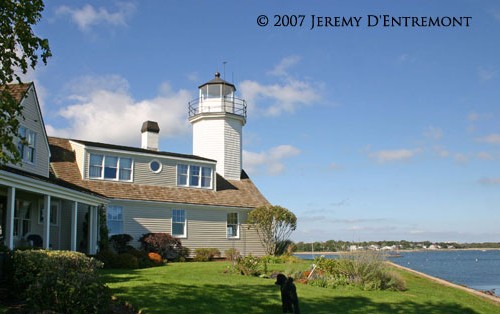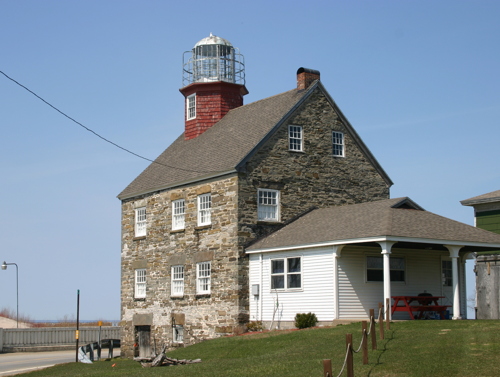The Point Lookout Light in Maryland marks the entrance to the Potomac River from Chesapeake Bay. John Donahoo of Havre de Grace, the master lighthouse builder of the Chesapeake, built an integral lighthouse at Point Lookout in 1830. It was one of a dozen lighthouses Donahoo built in his long career and it is one of seven Donahoo lighthouses that has survived.
The original Point Lookout lighthouse was a single story brick dwelling with a lantern centered on the roof. As the picture shows, this lighthouse has been modified considerably over the years. In 1883 the Lighthouse Board added a second story, and in the 1920s the house was expanded again, becoming rectangular rather than square. Only the front part of the lower story of the building is original. Nonetheless, Point Lookout is the oldest integral lighthouse in the country.
Deactivated in 1965, Point Lookout Light was long owned by the U.S. Navy as part of the Patuxent Naval Air Station. The Navy kept the building secure and painted but allowed the interior to deteriorate. In 2002 the state of Maryland bought the building, added it to Point Lookout State Park, and began an extensive restoration program. In recent years the lighthouse has been open for tours on the first Saturday of each month May through November. A major restoration project was underway in 2018.




